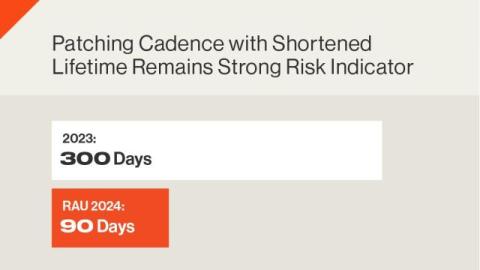2024 Bitsight Ratings Algorithm Update: Purpose, Observations, and Impact
As our 2024 Rating Algorithm Update (RAU) goes live on July 10, 2024, we wanted to share some research that validates this update and reinforces the importance of the RAU process. As we noted in our announcement blog, after RAU 2024, remediated Patching Cadence findings will impact the Bitsight Rating for 90 days after the last vulnerable observation instead of 300 days.




